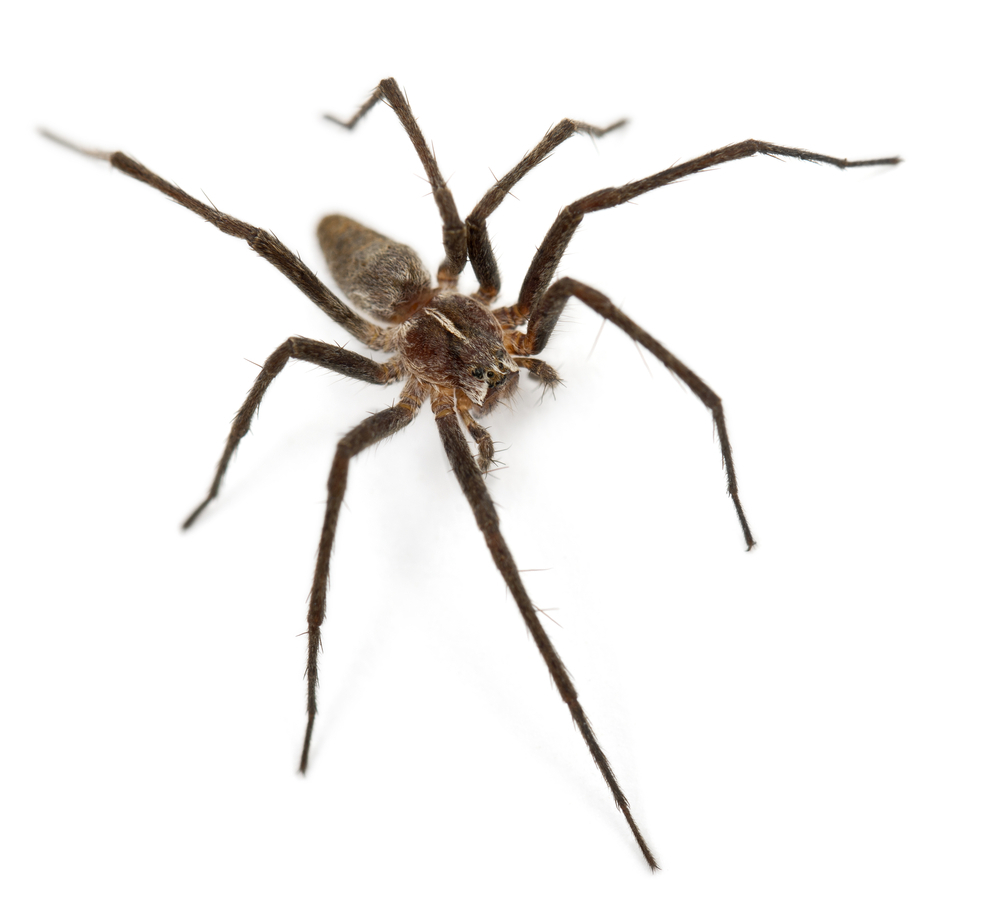
Contrary to popular belief, being a spiderman sucks.
Not only is your prospective mate often many times bigger than you, but after sex there’s a fair chance she’s going to kill and eat you. Being on the wrong end of an act of post-coitus cannibalisation is a genuine concern for many male arachnids, with their status dramatically switching from mate to meal in the eight eyes of their newly impregnated female partners as soon as the deed has been done, but a new study has revealed how the male nursery-web spider has come up with an innovative idea to avoid this unfortunate after-copulation calamity: by using websilk to tie up his mate.
As with most species of spider, male nursery-web spiders (Pisaurina mira) are smaller than their female counterparts, but in this case they have longer legs in comparison to their bodies. In what may look like a scene from 40 Shades of Spidery Grey, they appear to use this advantage to entrap their sexual partners limbs in loops of web during sex, which not only means they can escape without getting eaten at the end of it all, but they’re also able to achieve what the report calls ‘more insertions’, transferring greater amounts of sperm.
Many men might think human relationships are complicated and fraught with potential dangers and worries, but the dark world of spider sex puts things in perspective. Alissa Anderson, a behavioural ecologist at the University of Nebraska-Lincoln who worked on the report, explains that as soon as his sperm has been transferred, a male spider ceases to be a useful mate and simply becomes an edible resource for her developing offspring. The study details how, across multiple species, female spiders that consume their mate after copulation produce greater numbers of children, which weigh more and have a better survival rate.
The males don’t always take this lying down, however. The researchers noted that various tricks are used by males in various spider species that practise post-sex cannibalism—sometimes males sedate their partners, others will offer their mate an alternative meal such as a pre-caught fly, or even pretend to be dead after copulation, and some seek out females already eating their earlier sex partners and attempt to mate with them while they’re otherwise engaged—but nursery-web spiders are thought to be unique with their bondage approach.

‘In the nursery web spider, males restrain females prior to copulation by wrapping them with silk,’ says Anderson. Tests were also performed on spiders that had their spinnerets covered with dental silicone so they couldn’t produce web silk.
Or, in the scientific terms of the report: ‘We hypothesised that size dimorphism influences the ability of P. mira males to initially engage a female in copulation while silk wrapping enables them to acquire additional sperm transfer events (hereafter termed insertions) without being cannibalised. We test these hypotheses by randomly pairing phenotypically manipulated males (silk wrapping versus no silk wrapping) with females of variable size and assessing proxies of fitness.’

Both sets of males were seen to achieve a similar success rate in terms of mating with the females, but the males with their web-spinning ability removed were far more likely to get eaten and the ones who successfully tied their partners up not only lived to tell the tale, they also achieved more insertions. Males spiders with the longest legs had the best bondage technique and the highest survival rate, therefore ensuring they would live to mate another day, which should ensure their genes are passed on more successfully. (Although Anderson does say that the ‘putative fitness consequences, to both males and females, remain unknown.’)
Nursery-web spiders, which are common across the world in one form or another, are thus called because the female carries the eggs around in her jaws and pedipalps (mini-legs beside a spider’s head), and just before they hatch, she builds a silk ‘nursery tent’. A much better mother than she is lover, she will then stand guard outside the tent until the young hatch.
